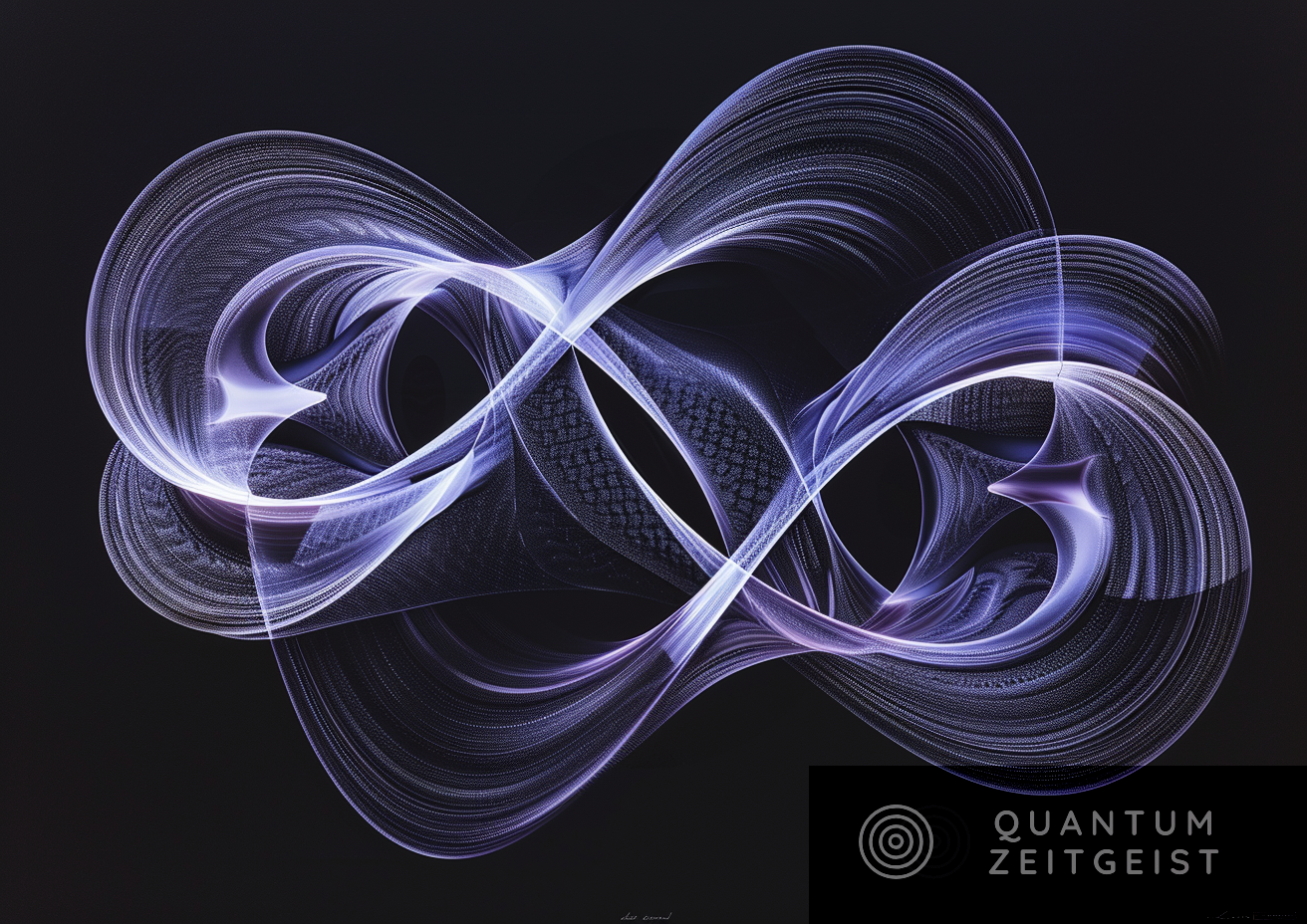Quantum chaos, a concept with significant implications across various scientific fields, is often misunderstood due to its complexity and lack of universally accepted classification. Researchers Neil Dowling and Kavan Modi have proposed a new metric for quantum chaos, the butterfly flutter fidelity, which provides a clear and consistent framework for understanding this concept. This metric could lead to advancements in fields ranging from physics to computer science. However, further research is needed to fully explore its implications and potential applications. Quantum chaos is also linked to other scientific phenomena, such as the black hole information paradox and the quantum foundations of statistical mechanics.
What is Quantum Chaos and Why is it Important?
Quantum chaos is a complex and often misunderstood concept that has significant implications across a variety of scientific fields. It is based on the principle that chaotic systems are highly sensitive to small perturbations. This principle is ubiquitous throughout biological, physical, and social sciences. However, the concept of chaos at the microscale, or quantum chaos, is not as well understood and lacks a universally accepted classification.
The study of quantum chaos is important because it can help us understand many-body dynamical phenomena such as many-body localization, measurement-induced phase transitions, and Floquet dynamics. These phenomena are critical to our understanding of the universe and have applications in a variety of fields, from physics to computer science.
Despite the importance of quantum chaos, there is a vast web of often inconsistent quantum chaos diagnostics in the literature, leading to a muddy picture of what this concept actually means. This is in contrast to classical chaos, which has a relatively complete framework.
How is Quantum Chaos Measured?
Neil Dowling and Kavan Modi, researchers from the School of Physics & Astronomy at Monash University and Quantum for New South Wales, have proposed a new operational metric for quantum chaos. They call this metric the butterfly flutter fidelity.
The butterfly flutter fidelity is based on the idea that the future state of a many-body isolated quantum system is sensitive to past multi-time operations on a small subpart of that system. By “sensitive,” the researchers mean that the resultant states from two different perturbations cannot easily be transformed into each other. In other words, the complexity of the effect of the perturbation within the final state is the pertinent quantity.
This new metric uses the language of multi-time quantum processes to identify a series of operational conditions on chaos, in particular, the scaling of the spatiotemporal entanglement. The researchers argue that their criteria already contain the routine notions as well as the well-known diagnostics for quantum chaos.
What are the Implications of this New Metric?
The butterfly flutter fidelity metric presents a unified framework for existing diagnostics within a single structure. This is a significant advancement in the field of quantum chaos, as it provides a clear and consistent way to measure and understand this complex concept.
Furthermore, the researchers also quantify how several mechanisms, such as evolution generated from random circuits, lead to quantum chaos. This work paves the way for a systematic study of many-body dynamical phenomena, which could have far-reaching implications in a variety of scientific fields.
In conclusion, the work of Dowling and Modi represents a significant step forward in our understanding of quantum chaos. Their new metric, the butterfly flutter fidelity, provides a clear and consistent framework for measuring and understanding this complex concept. This work could pave the way for new advancements in a variety of scientific fields, from physics to computer science.
How Does Quantum Chaos Relate to Other Scientific Concepts?
Quantum chaos is closely related to a number of other scientific concepts and phenomena. For example, it has been linked to the black hole information paradox and the quantum foundations of statistical mechanics. These connections highlight the broad relevance and importance of quantum chaos in the scientific community.
Furthermore, the researchers’ new metric for quantum chaos, the butterfly flutter fidelity, is based on the concept of spatiotemporal entanglement. This is a key concept in quantum physics and refers to the idea that particles can become entangled in such a way that the state of one particle is immediately connected to the state of the other, no matter how far apart they are.
In conclusion, the study of quantum chaos and the development of new metrics like the butterfly flutter fidelity can help to deepen our understanding of a range of scientific phenomena and concepts.
What is the Future of Quantum Chaos Research?
The work of Dowling and Modi represents a significant advancement in the field of quantum chaos. However, there is still much to be understood about this complex concept. The researchers’ new metric, the butterfly flutter fidelity, provides a clear and consistent framework for measuring and understanding quantum chaos. However, further research is needed to fully explore its implications and potential applications.
In the future, we can expect to see more research focused on understanding the mechanisms that lead to quantum chaos and developing new ways to measure and understand this phenomenon. This research could have far-reaching implications in a variety of scientific fields, from physics to computer science.
In conclusion, while the study of quantum chaos has made significant strides in recent years, there is still much to be understood about this complex concept. The work of Dowling and Modi represents a significant step forward, but further research is needed to fully explore the implications and potential applications of their new metric, the butterfly flutter fidelity.
Publication details: “Operational Metric for Quantum Chaos and the Corresponding Spatiotemporal-Entanglement Structure”
Publication Date: 2024-02-01
Authors: Neil Dowling and Kavan Modi
Source: PRX Quantum 5, 010314
DOI: https://doi.org/10.1103/PRXQuantum.5.010314

